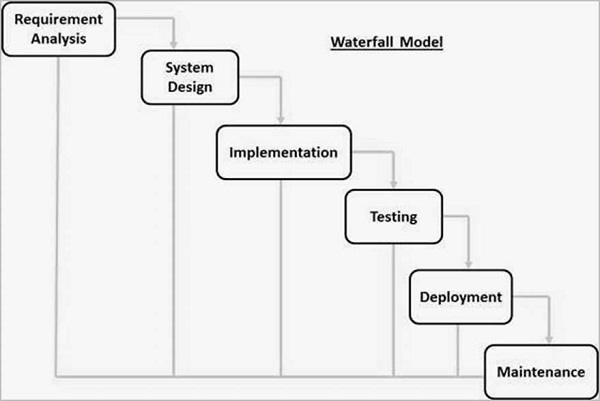What is Waterfall Model in SDLC?
The Waterfall Model was first Process Model to be introduced. It is also referred to as a linear-sequential life cycle model. It is very simple to understand and use. In a waterfall model, each phase must be completed before the next phase can begin and there is no overlapping in the phases.
Waterfall model is the earliest SDLC approach that was used for software development .
The waterfall Model illustrates the software development process in a linear sequential flow; hence it is also referred to as a linear-sequential life cycle model. This means that any phase in the development process begins only if the previous phase is complete. In waterfall model phases do not overlap.
Waterfall Model design
Waterfall approach was first SDLC Model to be used widely in Software Engineering to ensure success of the project. In "The Waterfall" approach, the whole process of software development is divided into separate phases. In Waterfall model, typically, the outcome of one phase acts as the input for the next phase sequentially.

The sequential phases in Waterfall model are:
- Requirement Gathering and analysis: All possible requirements of the system to be developed are captured in this phase and documented in a requirement specification doc.
- System Design: The requirement specifications from first phase are studied in this phase and system design is prepared. System Design helps in specifying hardware and system requirements and also helps in defining overall system architecture.
- Implementation: With inputs from system design, the system is first developed in small programs called units, which are integrated in the next phase. Each unit is developed and tested for its functionality which is referred to as Unit Testing.
- Integration and Testing: All the units developed in the implementation phase are integrated into a system after testing of each unit. Post integration the entire system is tested for any faults and failures.
- Deployment of system: Once the functional and non functional testing is done, the product is deployed in the customer environment or released into the market.
- Maintenance: There are some issues which come up in the client environment. To fix those issues patches are released. Also to enhance the product some better versions are released. Maintenance is done to deliver these changes in the customer environment.
All these phases are cascaded to each other in which progress is seen as flowing steadily downwards (like a waterfall) through the phases. The next phase is started only after the defined set of goals are achieved for previous phase and it is signed off, so the name "Waterfall Model". In this model phases do not overlap.
Waterfall Model Application
Every software developed is different and requires a suitable SDLC approach to be followed based on the internal and external factors. Some situations where the use of Waterfall model is most appropriate are:
- Requirements are very well documented, clear and fixed.
- Product definition is stable.
- Technology is understood and is not dynamic.
- There are no ambiguous requirements.
- Ample resources with required expertise are available to support the product.
- The project is short.
Waterfall Model Pros & Cons
Pros
|
Cons
|
Simple and easy to understand and use
|
No working software is produced until late during the life cycle.
|
Easy to manage due to the rigidity of the model . each phase has specific deliverables and a review process.
|
High amounts of risk and uncertainty.
|
Phases are processed and completed one at a time.
|
Not a good model for complex and object-oriented projects.
|
Works well for smaller projects where requirements are very well understood.
|
Works well for smaller projects where requirements are very well understood.
|
Clearly defined stages.
|
Not suitable for the projects where requirements are at a moderate to high risk of changing. So risk and uncertainty is high with this process model.
|
Well understood milestones.
|
It is difficult to measure progress within stages.
|
Easy to arrange tasks.
|
It is difficult to measure progress within stages.
|
Process and results are well documented.
|
Cannot accommodate changing requirements.
|
No working software is produced until late in the life cycle.
| |
Adjusting scope during the life cycle can end a project.
|
No comments:
Post a Comment